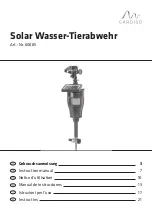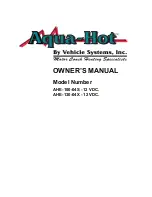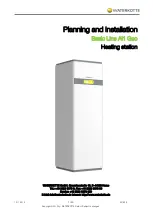
501
Thermo AC/DC
5 Troubleshooting
5
Troubleshooting and error correction
5.1
Allgemeines
The safety information and regulations of Chapter
(see
) must be observed.
This section describes troubleshooting and error correc-
tion for Thermo AC/DC heaters.
In case of doubt functional connections can be obtained in
chapters
and
.
Error detection is usually limited to localizing the faulty
component.
The following malfunction causes are not taken into
account and should basically always be verified and/or a
malfunction due to these reasons should be excluded:
•
Corrosion on plugs
•
Loose plug connections
•
Crimp failures on plugs and/or pins
•
Corrosion on cable and fuses
•
Cable insulation damage
ATTENTION:
Prior to replacing a fuse, troubleshooting needs to be
performed. The heater must be disconnected from the
vehicle electrical system.
A properly dimensioned fuse must be inserted (see
chapter
wiring diagrams).
After each error correction a functional test must be per-
formed in the vehicle.
5.2
General error symptoms
he following table lists possible, general error symptoms.
Danger to life and health!
Warning!
Table 501: General error symptoms
Error symptom
Possible cause
Heater can not be switched on.
•
Missing or insufficient supply voltage (24V)
•
24V fuses defective or not active
•
Supply lead to the plug contacts of the HV control
wiring harness (24V) defective or contact not
established
•
Plug of the temperature sensors not connected
•
Temperature sensors defective
•
HV small distribution board defective
•
HVIL (Interloop) – failure (if existent)
Operation indicator does not light and the heater does
not function.
•
No supply voltage
•
Fuses
Heater is functional, however the operation indicator
does not light.
•
Operation indicator defective or cables to the opera-
tion indicator interrupted or shorted.
ISO guard triggers because the ISO value is too low.
•
Insulation of one or more cables is damaged and in
contact with the electrically conductive structure of
the heater or vehicle
•
Heater/heating cartridges is/are overheated
Temperature in the water circuit is too high/low
•
Control thermostat defective
•
Diodes in LV wiring harness defective (if applicable,
heater may be hooked-up incorrectly).
Summary of Contents for Thermo AC 070
Page 47: ...memos...















































